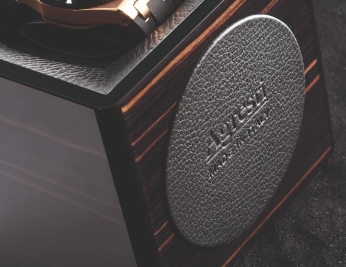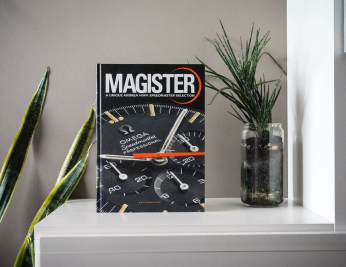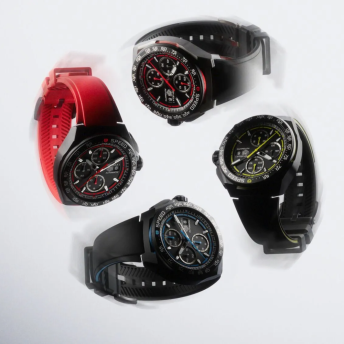The wristwatch has always been synonymous with elegance and sophistication, but following events such as the Great Wars, these items began to be designed for practical applications and extreme environments, such as diving, mountain exploration, aviation, and military missions. This shift in perspective was driven by real needs of professionals and adventurers, prompting brands to develop reliable and durable instruments.
For example, in this panorama, we find watches, which allowed airplane pilots to make mathematical calculations directly by reading the dial, or again, timepieces designed for divers that allowed the watch to be read in conditions of poor visibility underwater.
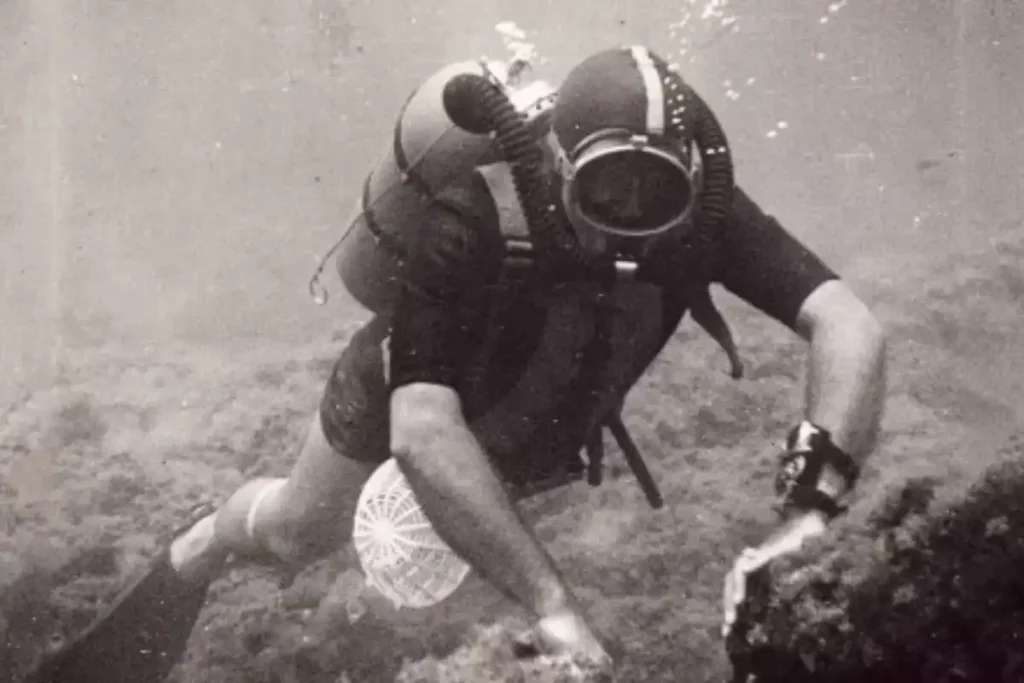
In the early 1950s, again for these reasons related to functionality, the protagonist of our story was born, namely, the first modern dive watch: Blancpain Fifty Fathoms.
The Story of the Blancpain Fifty Fathoms
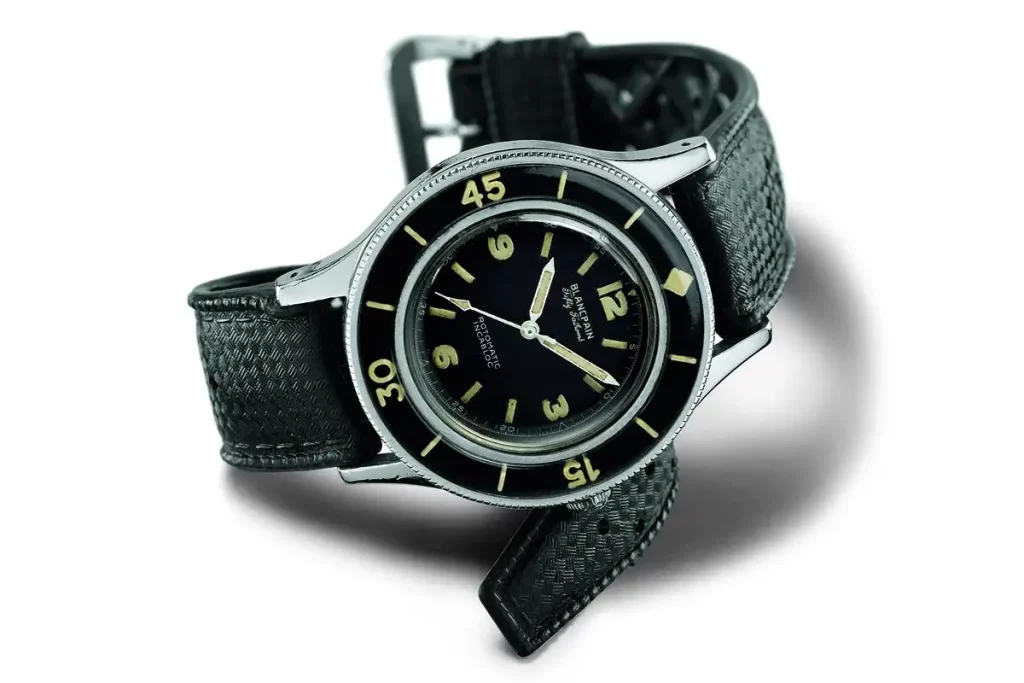
The Blancpain Fifty Fathoms is one of the most iconic dive watches in history. Its origin dates back to 1953 when, Blancpain, under the direction of Jean-Jacques Fiechter, launched the first true modern dive watch. This was because Fiechter, a passionate diver, had the idea of developing a watch that met all the requirements of safe and accurate diving. Because of his direct experience in the underwater world, Fiechter was aware of the specific requirements that a watch had to have to be a true diving instrument. At that time, most watches were not suited to withstand extreme conditions underwater.
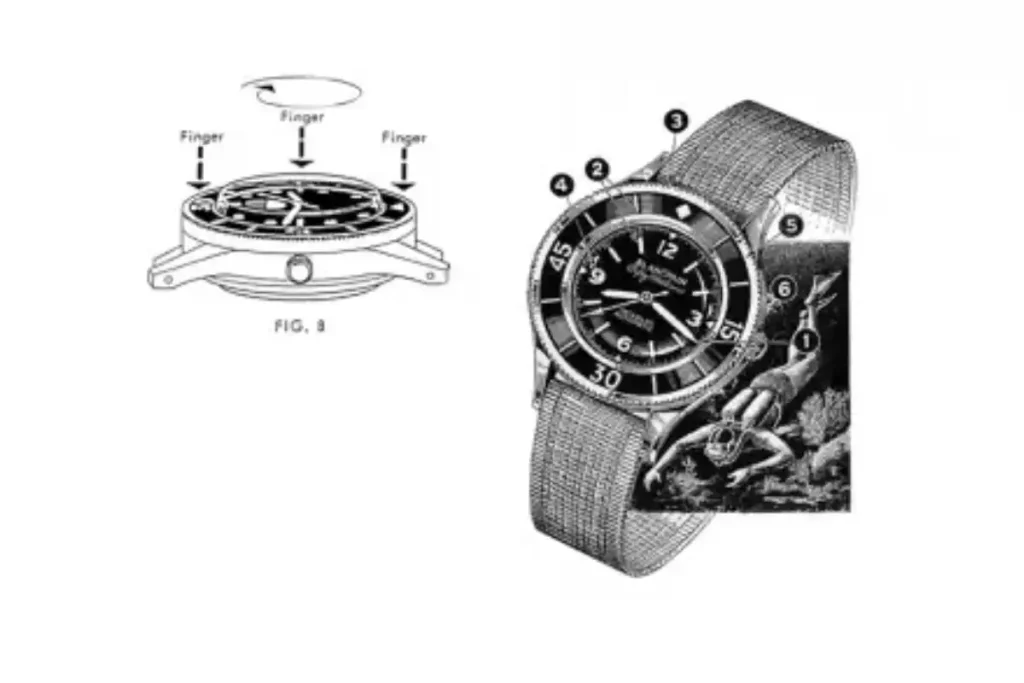
Fiechter introduced several innovations that soon became the standard for diving watches, such aswater resistance. To make the watch watertight, he patented an advanced gasket system, which involved the use of a specific channel with a metal ring to hold the “O-ring” gasket in place. This solution prevented the risk of twisting and misalignment of the seals when closing the case. The crown was designed to be sealed tightly, preventing water seepage.
He also introduced the unidirectional rotating bezel to measure dive time. This bezel could only be turned counterclockwise, a key feature for the safety of divers, so that even in the event of an accidental shock, the indicated dive time would only be reduced and never increased, avoiding the risk of being underwater too long.
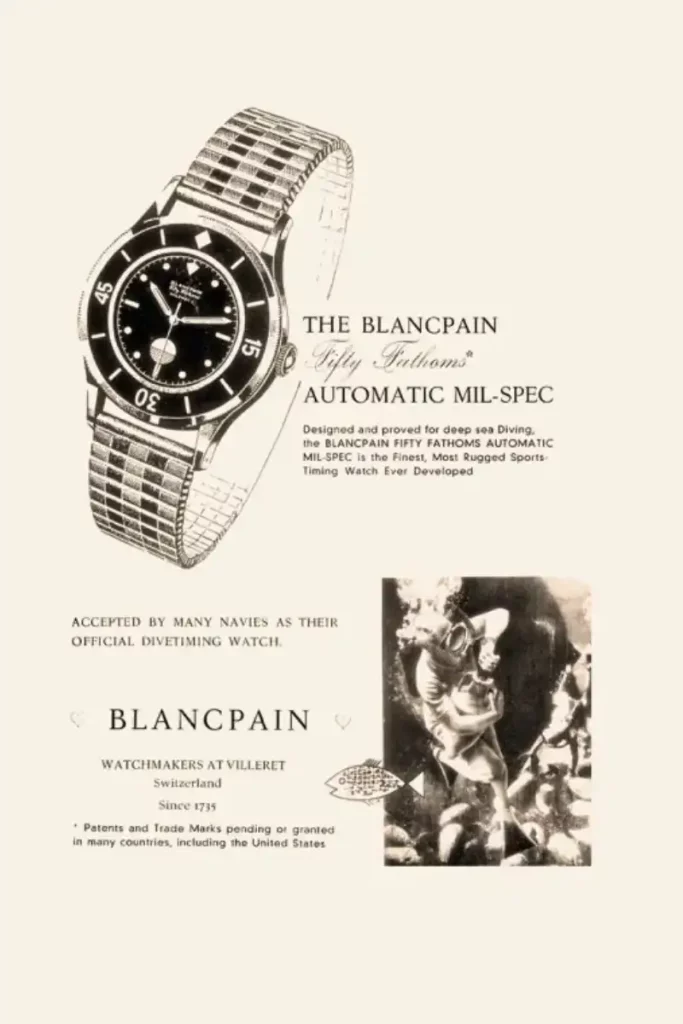
The dial of the Fifty Fathoms was designed in black and large, with white indexes and generously sized hands coated with luminescent material, ensuring strong contrast and legibility even in low light. It was decided to include an automatic movement inside to reduce wear on the crown and maintain the watch’s water resistance. This avoided frequent manual adjustments, thus minimizing the risk of compromising the seals.
Another important innovation was for the case, which was made of soft iron so as to shield the magnetic fields present in the deep sea.
As for the mdoel’s name, Fifty Fathoms, this comes from the British measure of sea depth; one fathom is equivalent to about 1.8 meters, so fifty fathoms represent about 91 meters, the maximum diving limit at the time. Fiechter was inspired by Shakespeare’s poem“The Tempest” where the word fathom is referred to. He decided to use fifty to evoke the idea of a deep and challenging dive.
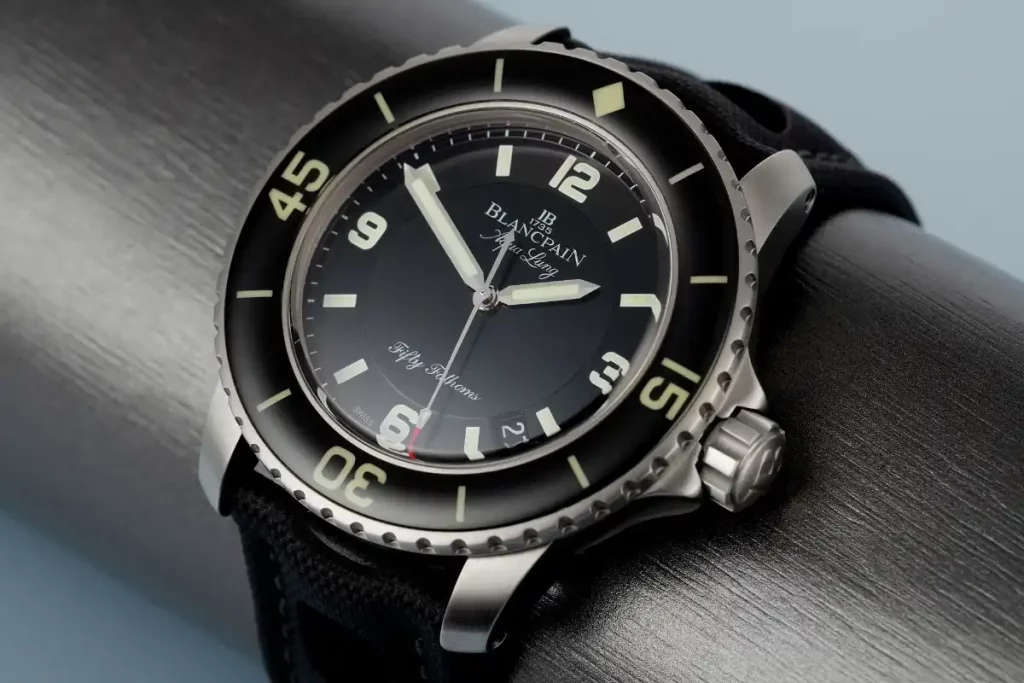
Parallel to Fiechter’s vision, French officers such as Robert Maloubier and Claude Riffaud, of the French Navy’s combat diver corps, were looking for a watch suitable for their missions. The two officers had outlined the features they needed and, after testing several models, chose the Fifty Fathoms for its reliability and durability.
However, due to French regulations, the Navy could only purchase equipment from French companies. This led Blancpain to collaborate with Spirotechnique, a company connected to Jacques-Yves Cousteau, which became the distributor of the Fifty Fathoms under the brand name “Aqualung.” The watch became even better known when Cousteau and his team used it during the filming of the documentary “The Silent World,” which won an Oscar and the Palme d’Or.
Evolutions and iconic versions of the Blancpain Fifty Fathoms
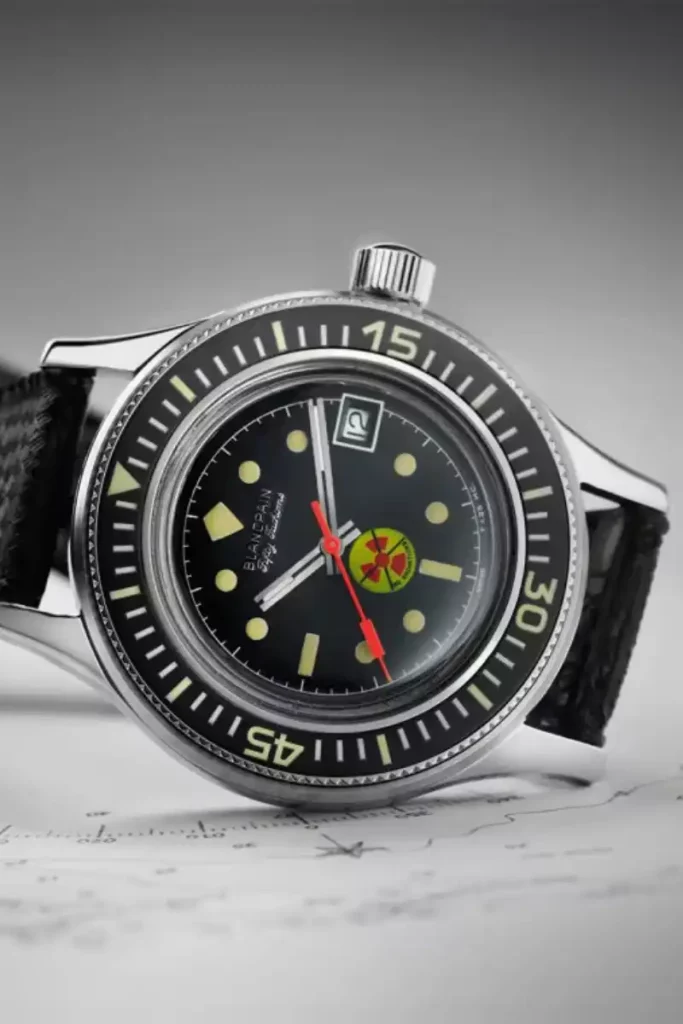
Over the decades, the Blancpain Fifty Fathoms was the subject of numerous variations, always maintaining its dive instrument DNA.
As requested by the French and American navies, Blancpain introduced a disc on the dial at six o’clock to signal the presence of moisture. In case of seepage, the disc would change color, from blue to red, alerting the diver to the problem.
In the 1950s, the Blancpain Fifty Fathoms was produced with the “No Radiations” symbol on the dial. This version used tritium instead of radium, a radioactive material that was used to illuminate the hour markers. The purpose was to reassure civilian divers that there were no hazardous radioactive materials.
At the request of the German Navy, Blancpain developed variants with cushion-shaped cases without the classic lugs. These models were particularly popular in the 1970s.
The 50th and 70th anniversaries of the Blancpain Fifty Fathoms
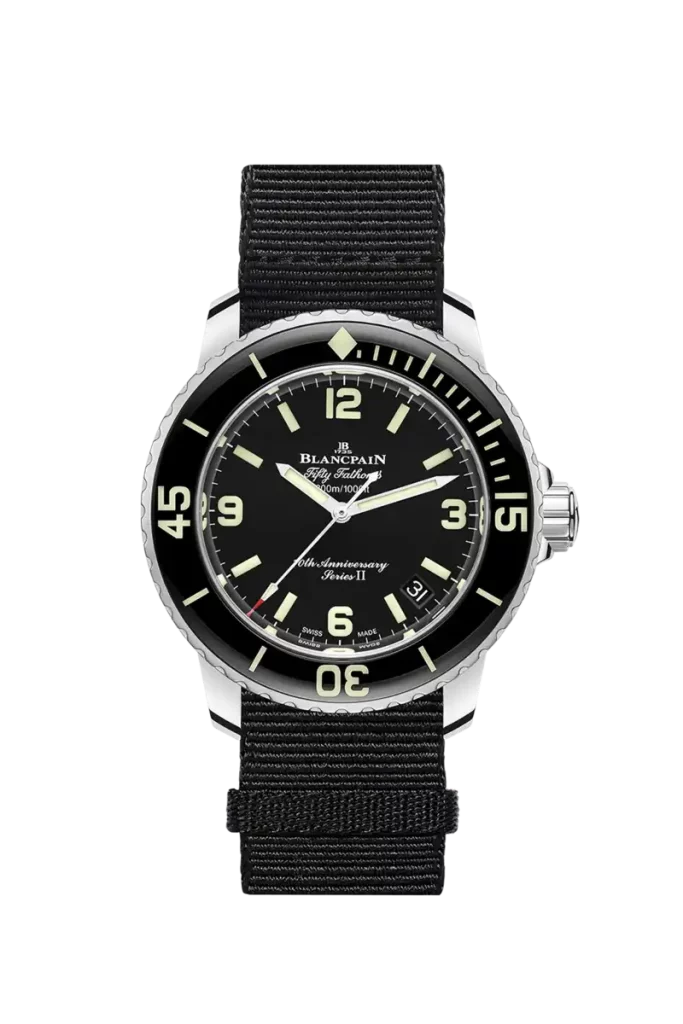
2003 marked the 50th anniversary of the Fifty Fathoms, celebrated with a limited edition version of the iconic model. In 2023, for the 70th anniversary, Blancpain launched three new models: Act 1, dedicated to the current version of the Fifty Fathoms; Act 2, which introduced innovations for technical diving; and Act 3, a tribute to vintage models inspired by the MIL-SPEC adopted by the major armed forces of the time.
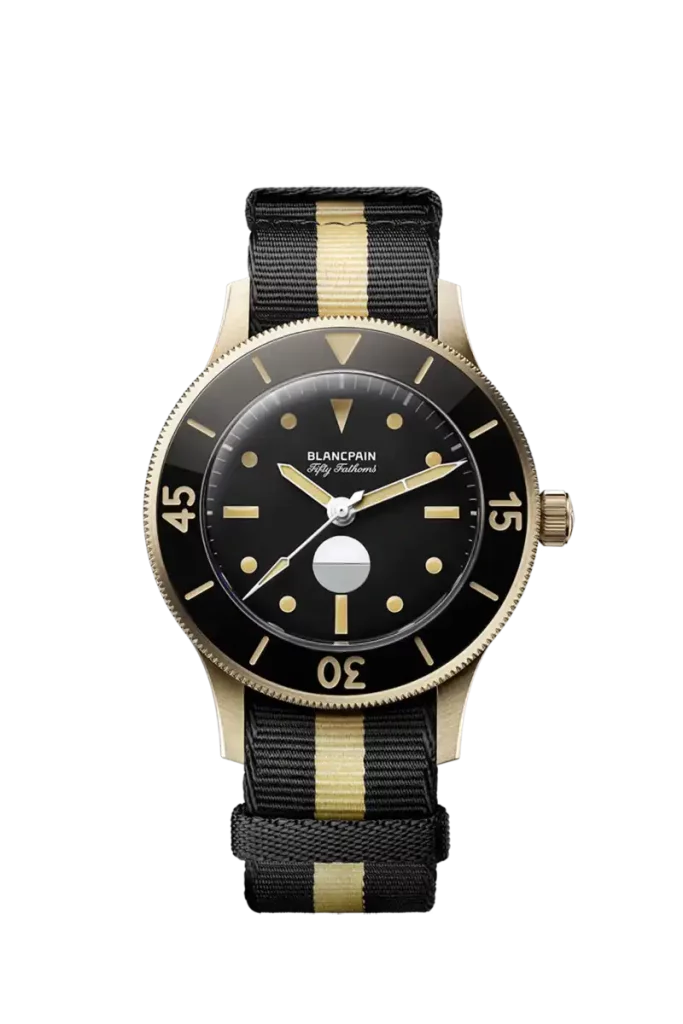
The Blancapain Fifty Fathoms x Swatch was also presented in 2023. This model fused the tradition of the Le Brassus brand with the vibrancy of color that has always been a hallmark of Swatch. The result was a collection of five watches with elements that recall the Fifty Fatoms’ past and history.
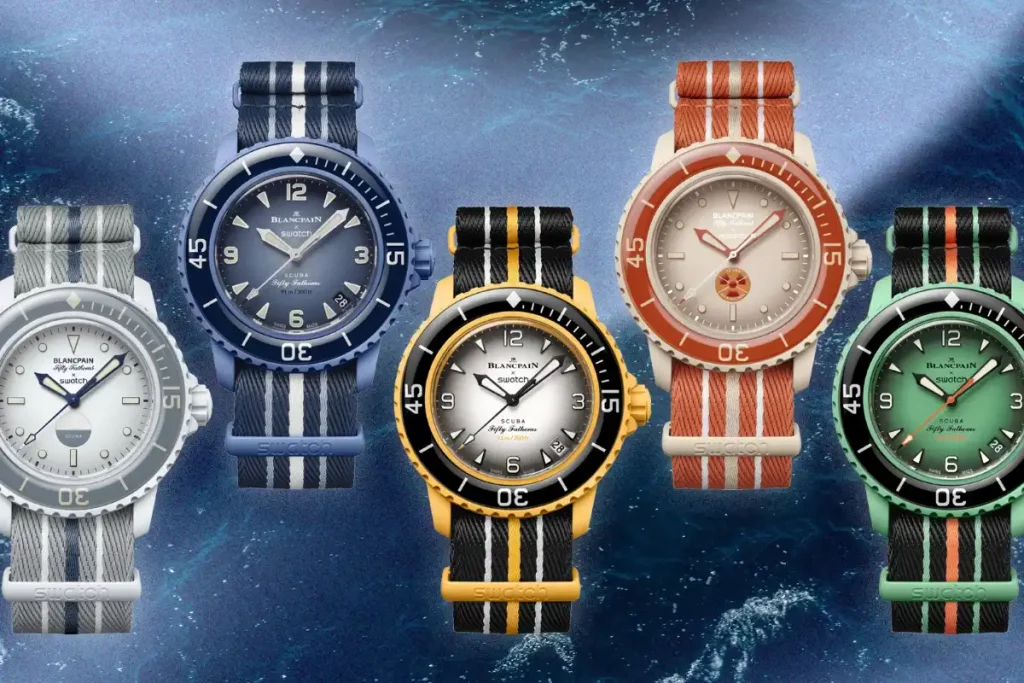
Each watch was made to pay homage to an ocean, with a case made of bioceramic; the strap was obtained by recycling fishing nets found in the sea, showing a strong commitment by both brands to the eco-sustainable theme.
Blancpain Fifty Fathoms Today
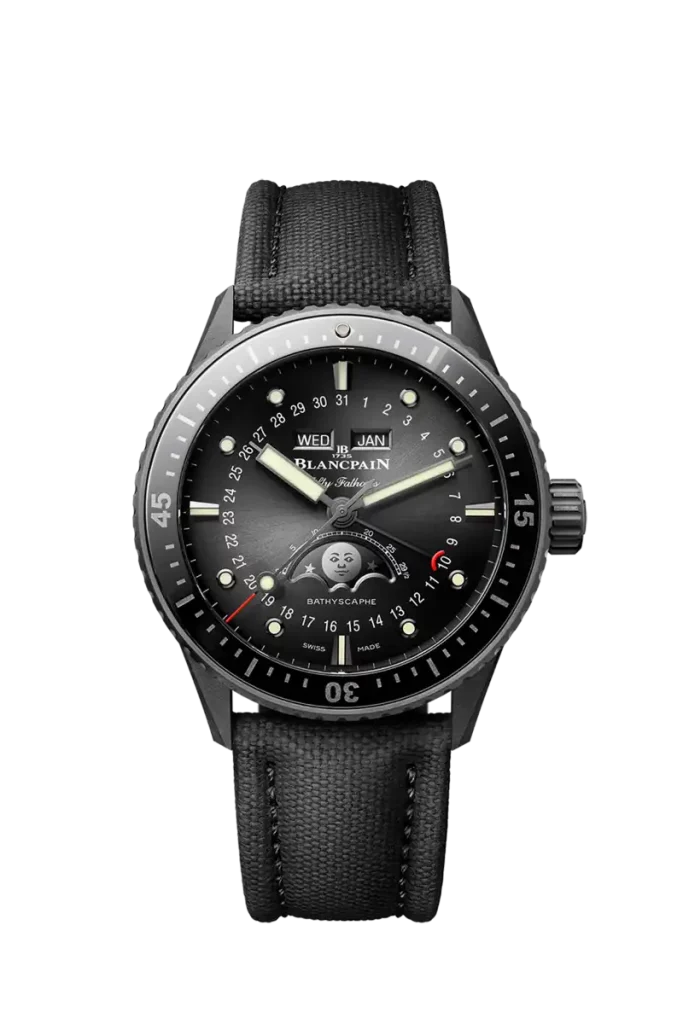
Over the years, the Blancpain Fifty Fathoms has also evolved in terms of complications, integrating models with moon phases or perpetual calendars, which have embellished the collection. Nowadays, in fact, this is very broad and has several varieties within it, both in terms of functionality and materials.
Conclusions
We are particularly fond of this model, as it unwittingly pioneered a style that dominates the market today, namely dive watches marked by elegance and sportiness.
Today, the Blancpain Fifty Fathoms continues to be a benchmark in the world of dive watches, a symbol of the perfect union of tradition, innovation and passion for the marine world.
Visit our Youtube channel to experience the best of the world of watchmaking firsthand.
For all real-time updates follow us on Instagram.
Sources
https://lettresdubrassus.blancpain.com/en/issue-13/history-and-legend; https://www.blancpain.com/en/fifty-fathoms-collection/history/no-rad-2021; https://www.blancpain.com/it/collezioni/collezione-fifty-fathoms; https://www.blancpain.com/it/blancpainxswatch https://www.swatch.com/it-it/bioceramic-scuba-fifty-fathoms.html
